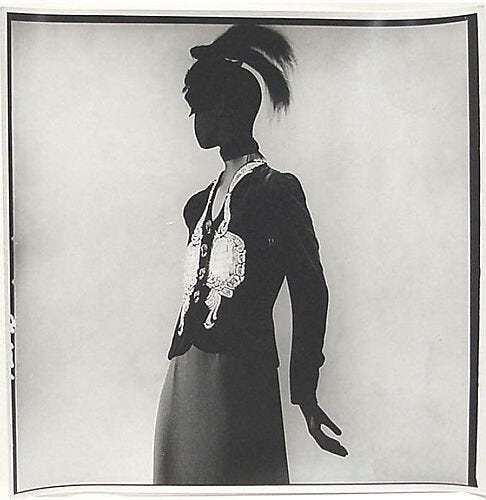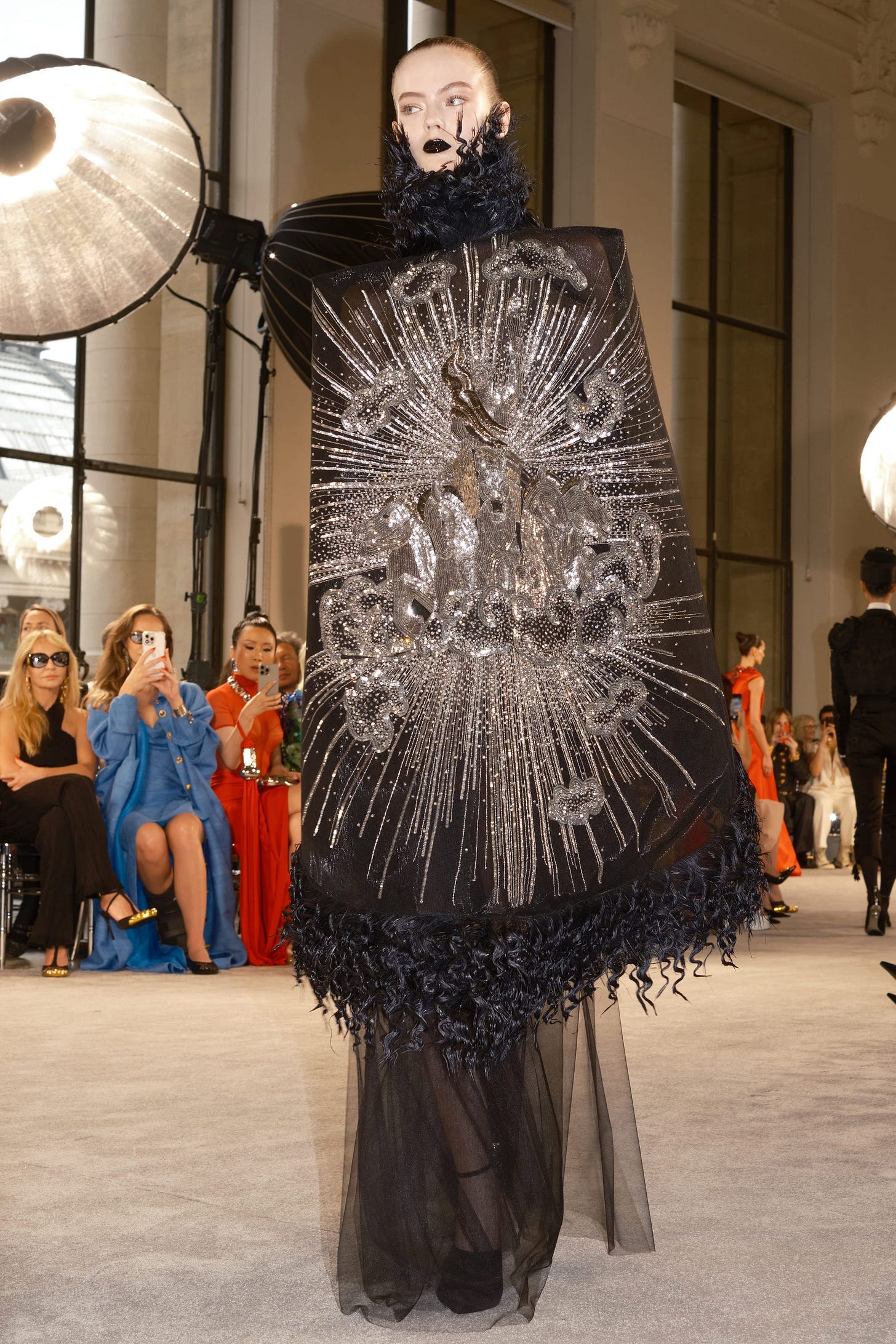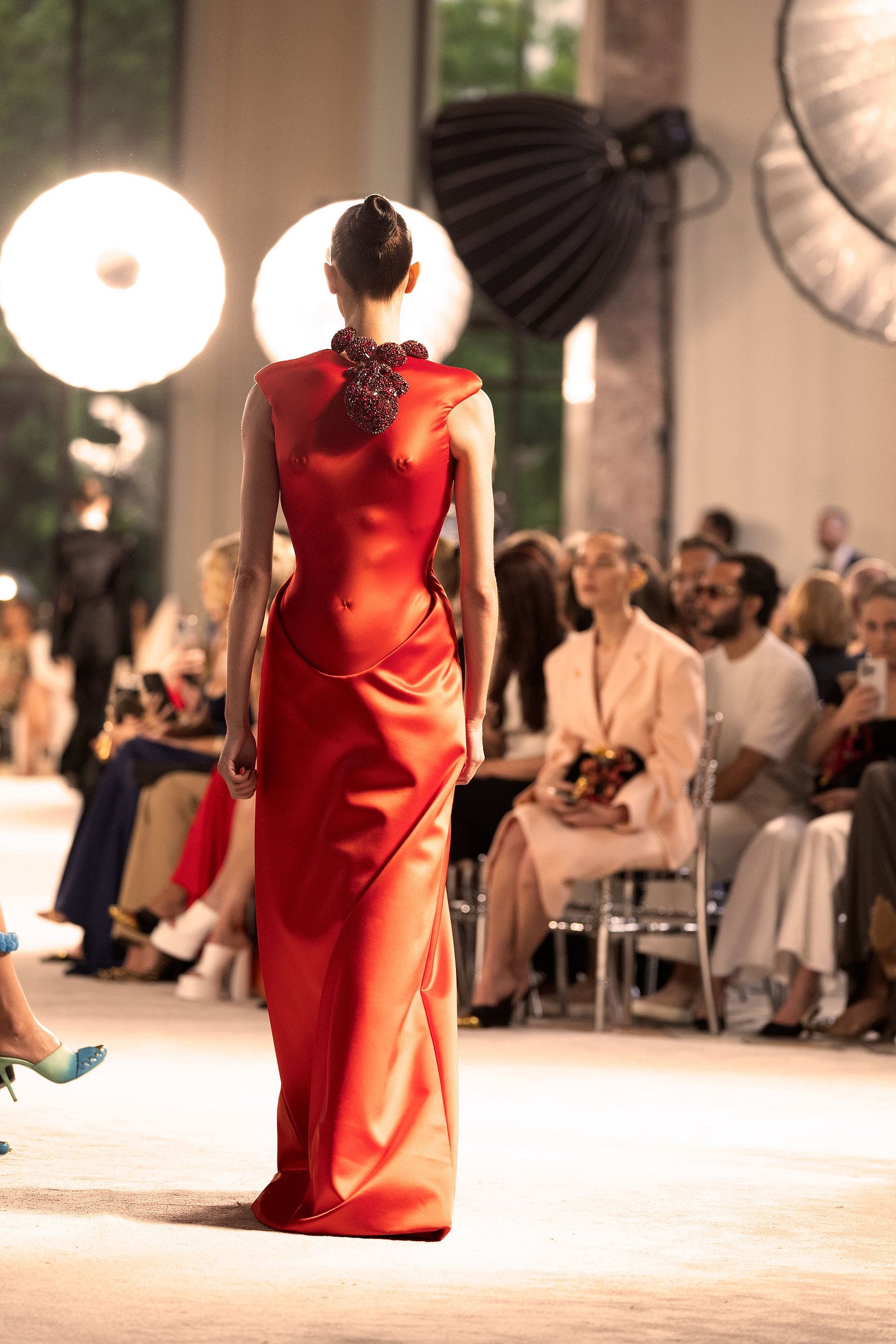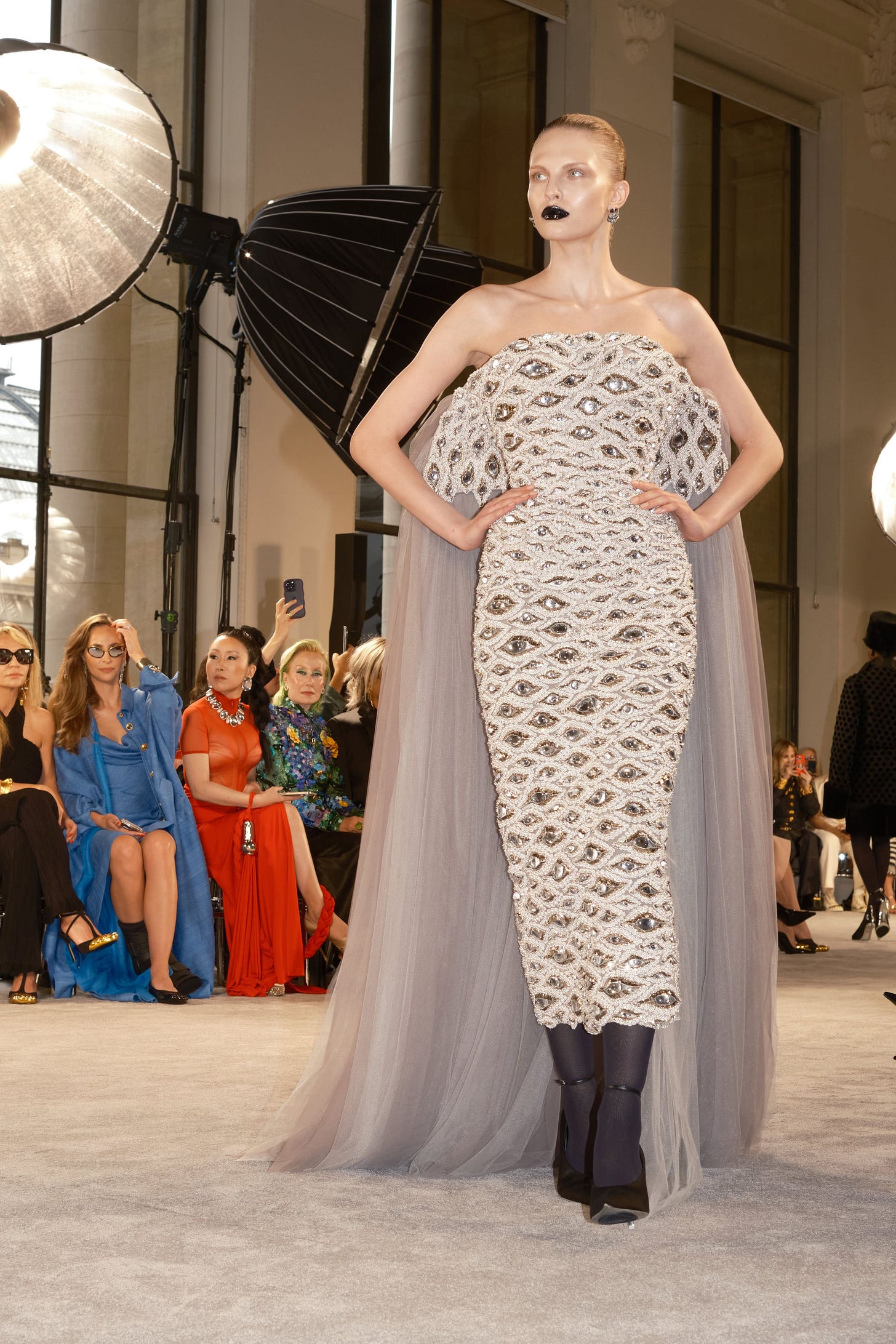Couture Week Fall '25: Schiaparelli
Reviewing the Fall 2025 collection presented in Paris and what it means for the house historically.
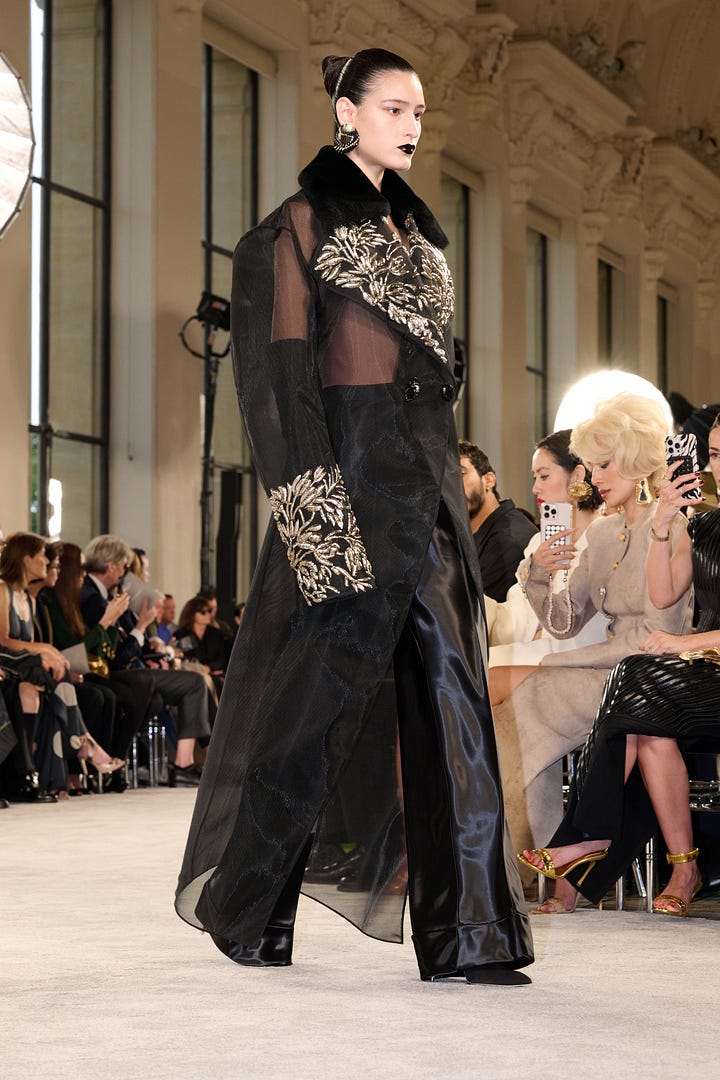
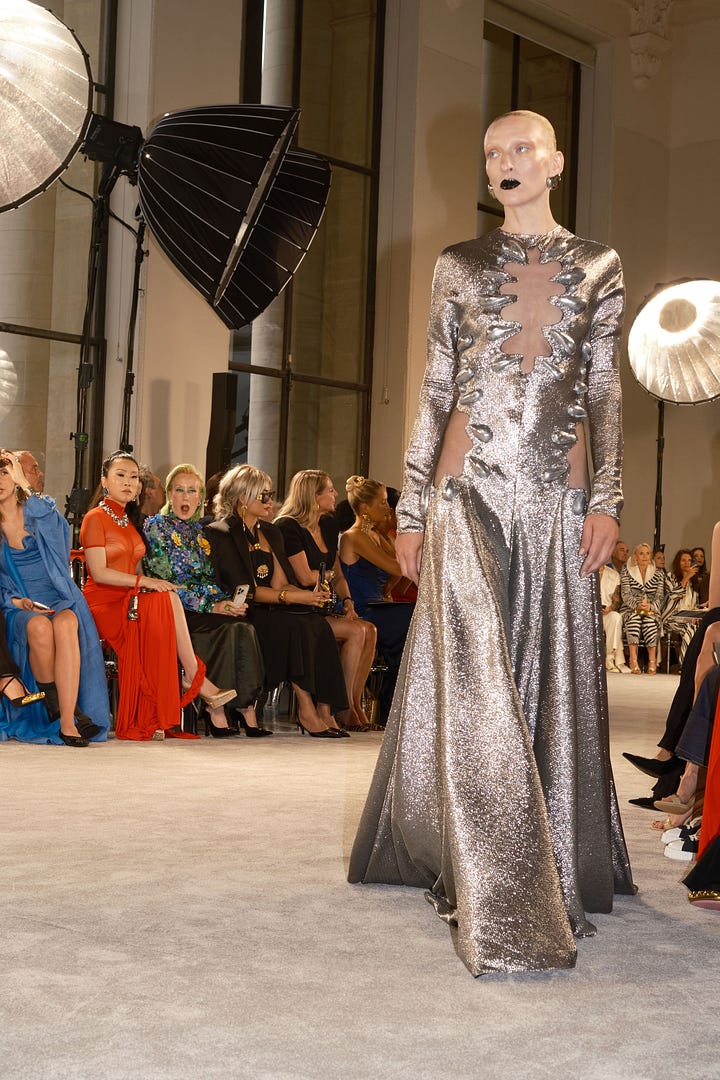
While I’ve always adored the Schiaparelli house and Daniel Roseberry’s recent vision for the brand, I found this collection particularly meaningful. This was one of my favorite collections over these past years. The drama was incredible — and anybody who knows me, knows that I love darker themes. Incorporating those gothic elements was really what sealed it for me.
Founded in 1927, Elsa Schiaparelli was one of the two female visionaries of the time. Alongside Coco Chanel, whose goal was to free the female body from the constraints of the corset, Schiaparelli was more focused on playing with the boundaries between clothing and art. She later settled in Paris after establishing a brand known for its surrealist and eccentric codes, working on her brand through the 1930’s. She eventually left Paris in 1940. The time period is especially important here, noting the fast approach of WWII. Paris was not only the epicenter of fashion at that time, but also in the middle of the war.
“Two poles, existing improbably in the same city, at the same time. This collection is dedicated to that period, when life and art was on the precipice…”
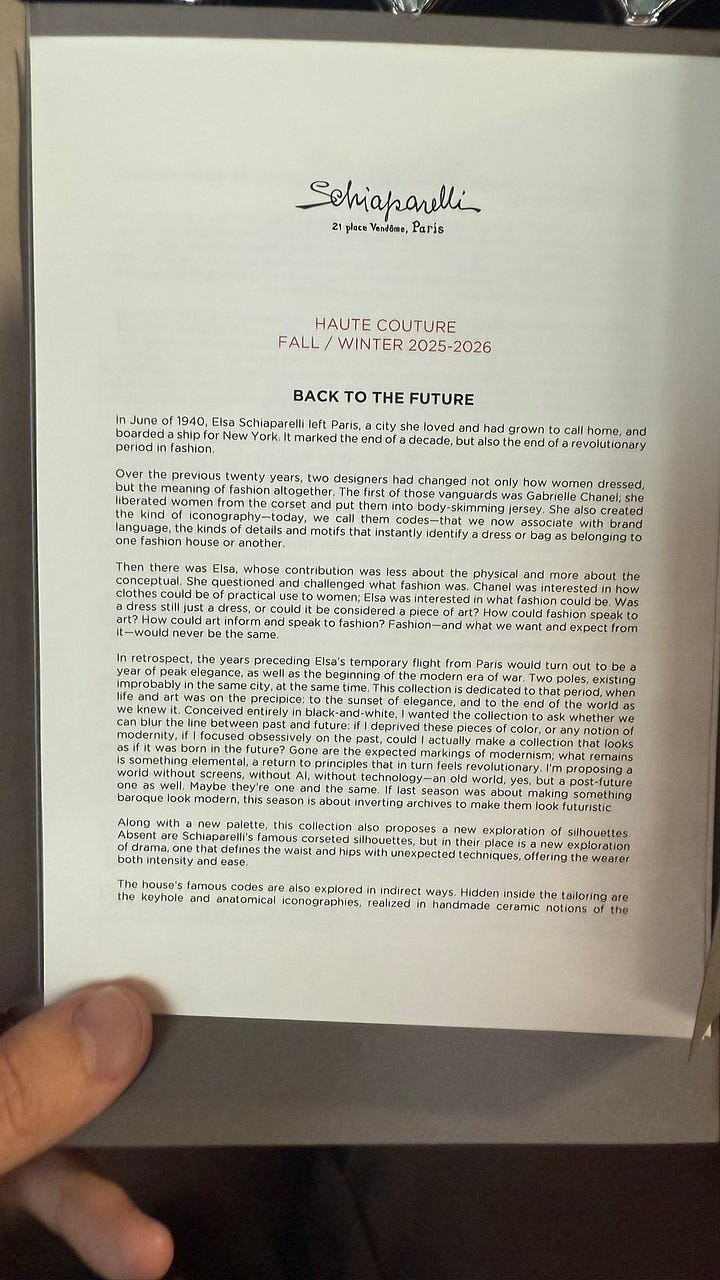

Contextualizing this collection, Elsa Schiaparelli’s relationship with the surreal had delivered her into a particular friendship — with Spanish surrealist artist Salvador Dalí. She had always admired his work. They released their first joint creation in 1935 which was a telephone dial. A joint fashion collaboration soon followed in the Haute Couture 1935/36 collection. They created the “Mirror Suit” which was inspired by his painting The Anthropomorphic Cabinet (1936).
If you’ve seen any of Dalí’s work, you’ve likely noticed several common themes including: the lobster, symbols of women, pocket watches, eyes and other separated body parts. The Schiaparelli house has long been incorporating these elements into fashion collections, following Elsa’s frequent use of those themes.


Pictured above is not only the Chapeau Chaussure which Schiaparelli and Dalí created together (1937), but the jacket featuring embellishments, which to this day, are iconic to the brand — present in essentially every contemporary collection (pictured below). Also notice the lobster motif of this Spring’24 collection. This references several of Dalí’s pieces, most notably perhaps the Lobster Telephone.
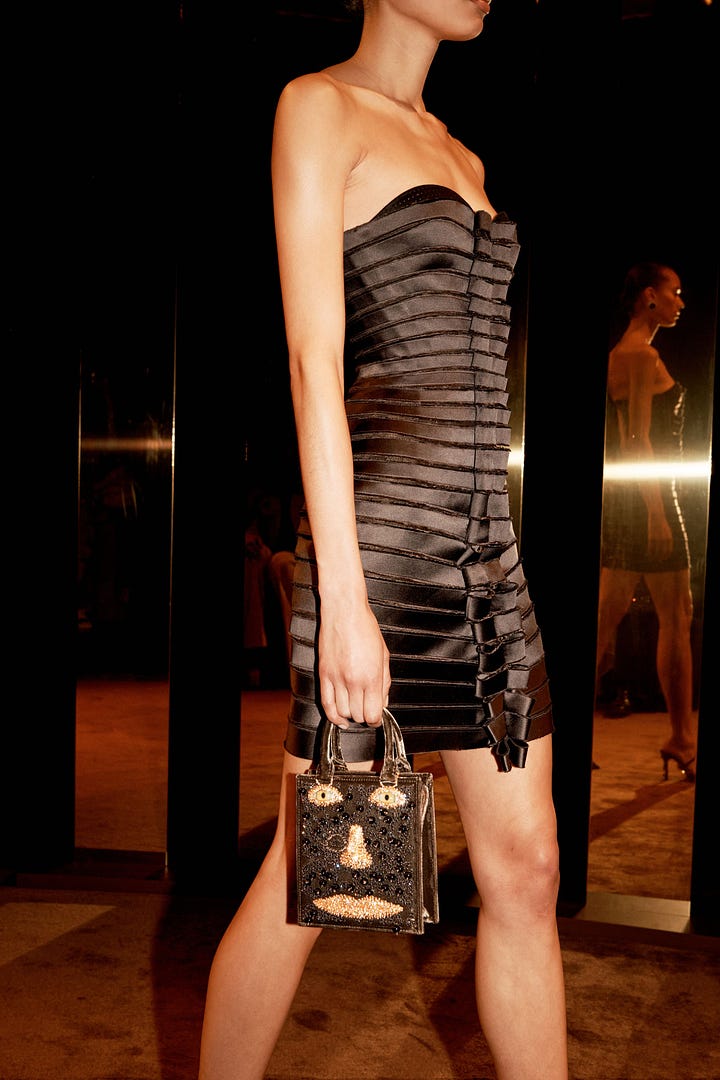
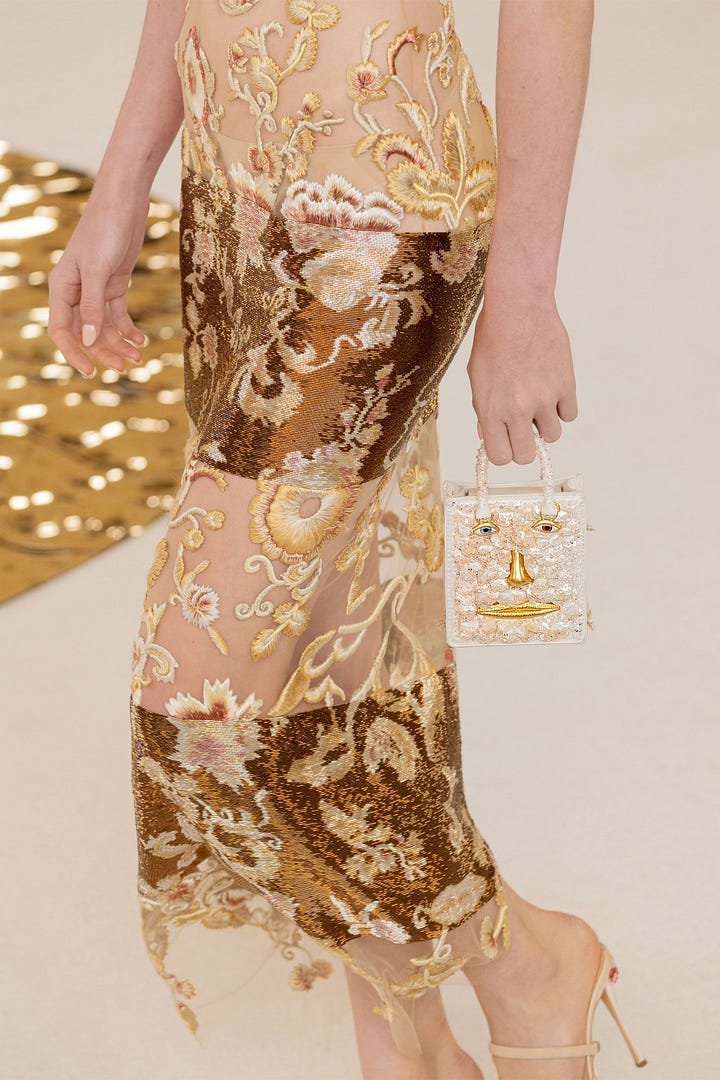
While surrealism elements are essentially always present within the codes of the brand, Daniel Roseberry’s most recent collection presents a strong showcasing of them. Some brands struggle to maintain the house’s DNA among the shuffle of creative directors throughout the years. But Roseberry is really getting the job done. His strong vision and impeccable execution is why he was chosen to revive the brand. I’m eager to see who will be wearing this collection at upcoming red carpet events.




